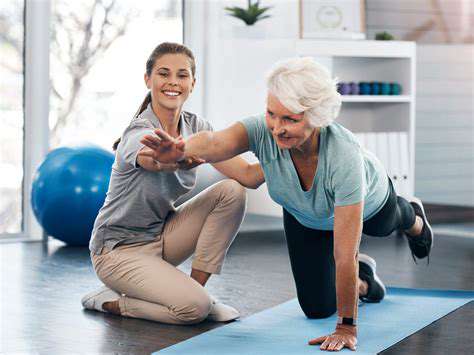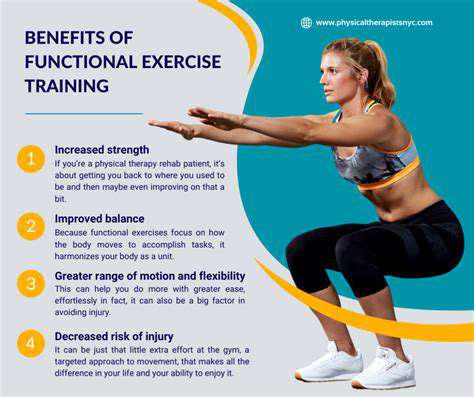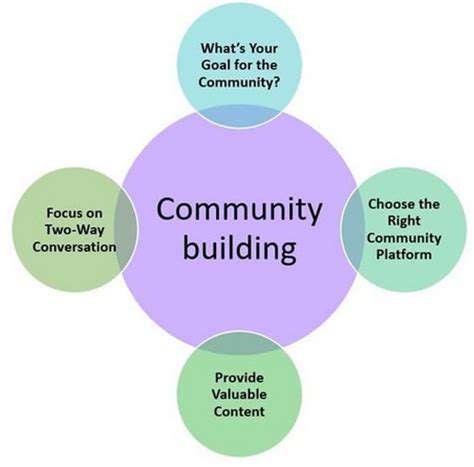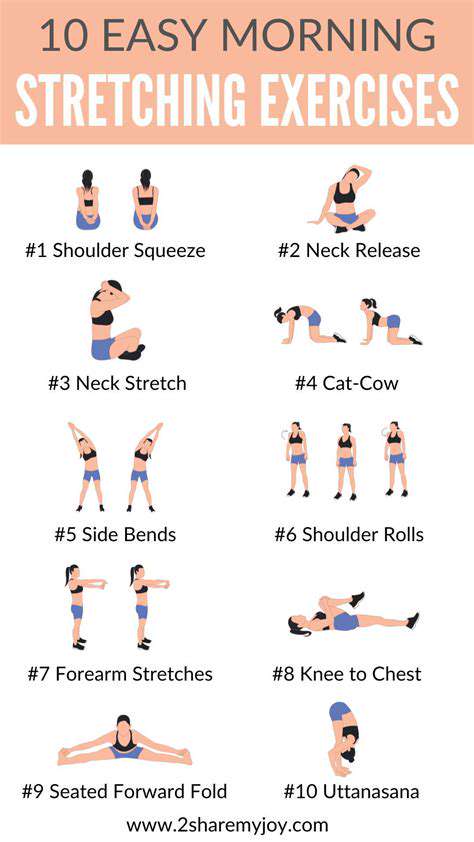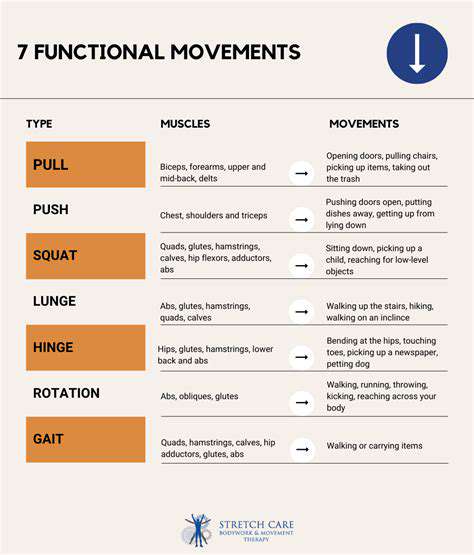Tai Chi for Beginners: Enhancing Balance in Older Adults
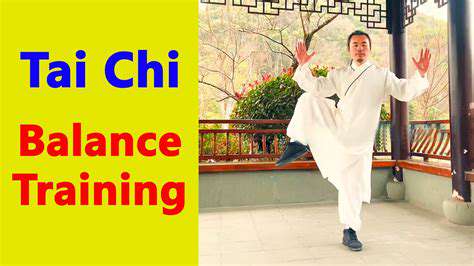
The Benefits of Tai Chi for Balance in Older Adults
Improving Balance and Coordination
Tai Chi, with its graceful, flowing motions, has long been celebrated for its wide-ranging health benefits, especially among seniors. One standout advantage is how it enhances stability and coordination. The deliberate, measured movements activate multiple muscle groups, building both strength and flexibility. This improved physical control leads directly to better balance and fewer falls—a major worry for older individuals. With consistent Tai Chi practice, people often see marked progress in maintaining steadiness during daily tasks.
The mindful, controlled nature of Tai Chi also sharpens proprioception—the body's sense of its position in space. This heightened awareness helps seniors respond more effectively to potential stumbles, cutting fall risks and preserving independence. The exercises foster a deeper connection with one's body, which is vital for staying balanced and adapting to environmental changes.
Lowering Fall Risks
Falls pose serious dangers for older adults, frequently resulting in injuries, reduced mobility, and diminished quality of life. Tai Chi's focus on balance, coordination, and body awareness tackles this issue head-on. Its slow, purposeful movements strengthen the muscles that keep us upright, making it easier to stay steady. Research confirms that regular Tai Chi can dramatically decrease fall rates among seniors, offering a potent preventive measure against this widespread concern.
Additionally, Tai Chi can quicken reaction times and reflexes—key factors in avoiding falls. The practice's attentive movements promote focus and awareness, enabling practitioners to react swiftly to instability. This improved responsiveness is crucial for preventing accidents and maintaining safety in everyday life.
Boosting Physical Function and Mobility
Tai Chi's benefits reach far beyond balance, positively impacting overall physical capability and movement. The practice builds muscle, increases flexibility, and supports heart health. Together, these gains lead to greater stamina, agility, and ease in performing daily activities. Unlike high-impact exercises, Tai Chi's gentle motions build strength and flexibility without jarring the body.
Enhanced mobility is particularly valuable for seniors, enabling fuller participation in daily life. Whether climbing stairs, rising from chairs, or simply walking, better movement significantly improves quality of life. Tai Chi's mindful approach fosters confidence and control, empowering older adults to navigate their surroundings with assurance.
Supporting Mental Well-being
Beyond physical perks, Tai Chi offers substantial mental health benefits. The concentration and mindfulness it requires can alleviate stress and anxiety, fostering calm and contentment. The rhythmic motions and controlled breathing function like meditation, quieting the mind and inducing relaxation. This calming effect may lower stress hormones and boost overall mental health.
The social component of Tai Chi classes also plays a key role in emotional wellness. Connecting with others through shared practice builds community and combats isolation—common issues among seniors. Structured classes provide both physical activity and social interaction, contributing to a more satisfying experience.
Finding a Qualified Tai Chi Instructor
Essential Qualities of a Good Instructor
Starting your Tai Chi journey requires finding a knowledgeable, experienced teacher. A skilled instructor won't just teach movements—they'll adapt the practice to your unique needs and abilities. Seek teachers with thorough Tai Chi knowledge, proven experience, and enthusiasm for sharing the art. A great instructor will account for your health background and physical limits, ensuring safe, effective exercises. This personalized approach is vital for a rewarding learning experience.
Beyond technique, top instructors communicate clearly. They give straightforward instructions, answer questions patiently, and foster supportive learning environments. They build class camaraderie, creating spaces where students feel comfortable seeking clarification.
Evaluating Credentials and Experience
Before choosing an instructor, research their qualifications. Check for certifications from respected Tai Chi organizations and ask about their teaching history. Extensive experience indicates deeper understanding of principles and techniques, plus ability to guide diverse students. Experience also means better awareness of physical limitations and necessary modifications.
Attend a trial class to observe teaching style firsthand. Notice how the instructor communicates, explains concepts, and interacts with students. Their passion and approach should make learning both effective and enjoyable.
Locating Local Resources
Tap into community networks to find qualified instructors. Check community centers, senior centers, and gyms—many offer Tai Chi classes. Word-of-mouth and online reviews provide valuable insights. Ask Tai Chi-practicing friends or relatives for recommendations—personal referrals often lead to ideal matches.
Online directories and forums can also help. Look for Tai Chi communities where members share experiences and suggestions. When reviewing online feedback, consider source reliability.
Incorporating Tai Chi into Daily Life

Daily Practice Advantages
Making tai chi part of your routine delivers numerous physical and mental rewards. Consistent practice markedly improves balance and coordination, slashing fall risks—especially crucial for seniors. These fluid movements enhance flexibility and joint mobility, easing stiffness. The rhythmic, controlled nature also promotes relaxation and stress relief, cultivating tranquility.
Beyond physical benefits, tai chi develops mindfulness. Concentrating on movements and breath creates mental respite from daily pressures. This meditative aspect can improve emotional control and inner peace.
Implementation Strategies
Successfully weaving tai chi into daily life requires planning. One effective method is scheduling sessions like important appointments. Regularity is essential for full benefits—aim for consistent practice, even just 15-20 minutes daily. Morning, lunchtime, or evening sessions all work well.
Consider blending tai chi with existing routines. For example, incorporate gentle movements during dog walks. Office workers might practice simple exercises during breaks. These small additions can significantly boost wellbeing.
Building Support Networks
A supportive environment enhances tai chi practice. Consider joining a class or finding an instructor for guidance and accountability. Group practice boosts motivation and fosters community. Learning alongside others creates dynamic environments for growth. Instructors provide personalized adjustments for individual needs.
Customizing for Your Life
Adapting tai chi to your lifestyle ensures long-term commitment. Those with limited mobility can use modifications for safety and effectiveness. Tai chi suits all ability levels, from beginners to advanced practitioners. Consult healthcare providers or instructors to tailor practices to your specific requirements and prevent injury.
Overcoming Obstacles
Adopting any new practice presents challenges. Finding time in busy schedules is common. Treating tai chi as a wellbeing priority helps overcome this hurdle. Small schedule tweaks—like rising 15 minutes earlier—can carve out necessary time. Maintaining motivation is another challenge. Setting realistic goals, celebrating progress, and focusing on benefits can help sustain commitment.


